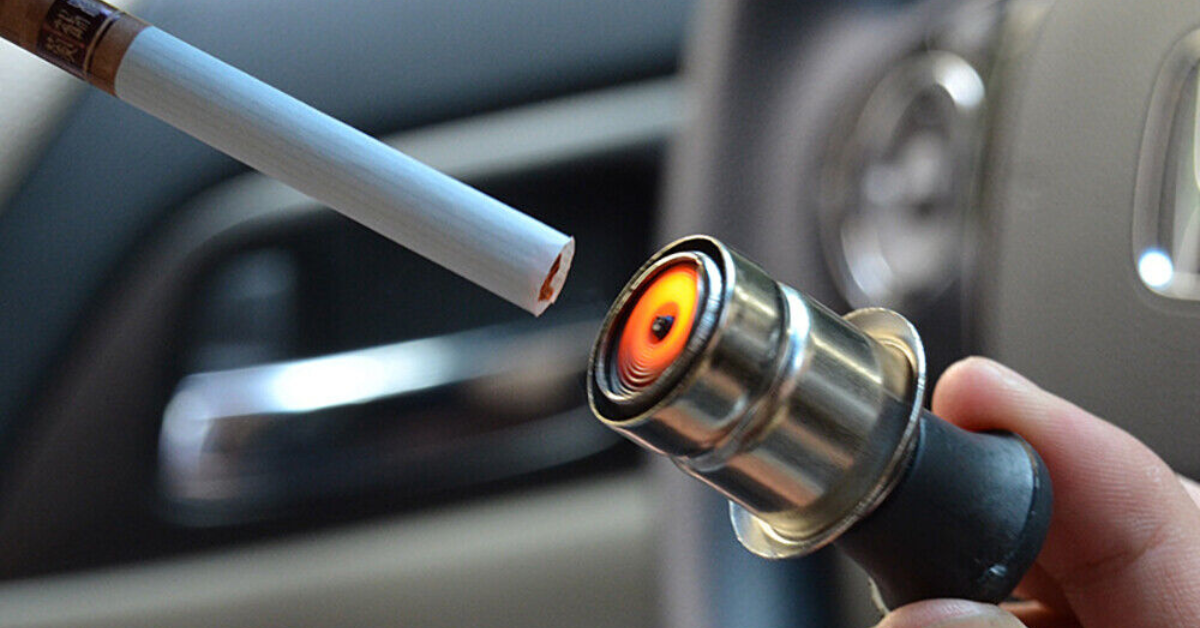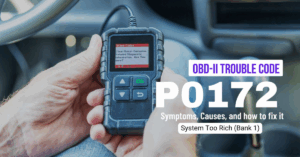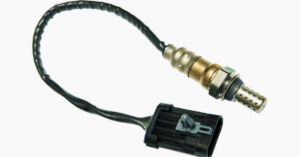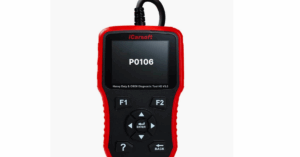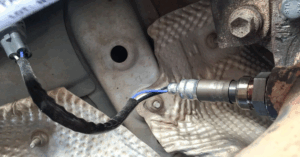A car cigarette lighter is more than just a tool for lighting a cigar; it serves multiple functions, such as charging phones, GPS devices, and cams, making it a valuable gadget in automobiles. When the lighter’s socket is not working, it creates an inconvenient situation for drivers, especially if their phone battery is low and they need a quick charge.
The possible reasons behind this problem could be a blown fuse, bad wiring, or foreign objects stuck inside, all of which need to be repaired for proper power supply. Over time, automakers have evolved their vehicles, and while some manufacturers still add this feature, others have omitted it due to increased environmental awareness and concerns about smoking and health.
Despite this, several people rely on cigarette lighters, and modern-day cars now come equipped with USB ports and other options to enhance the driving experience. If your lighter is not working, it’s best to check the fuse, ensure the nichrome coil is heated, and replace any damaged parts to avoid further inconvenience.
Why Do You Need to Fix Your Cigarette Lighter?
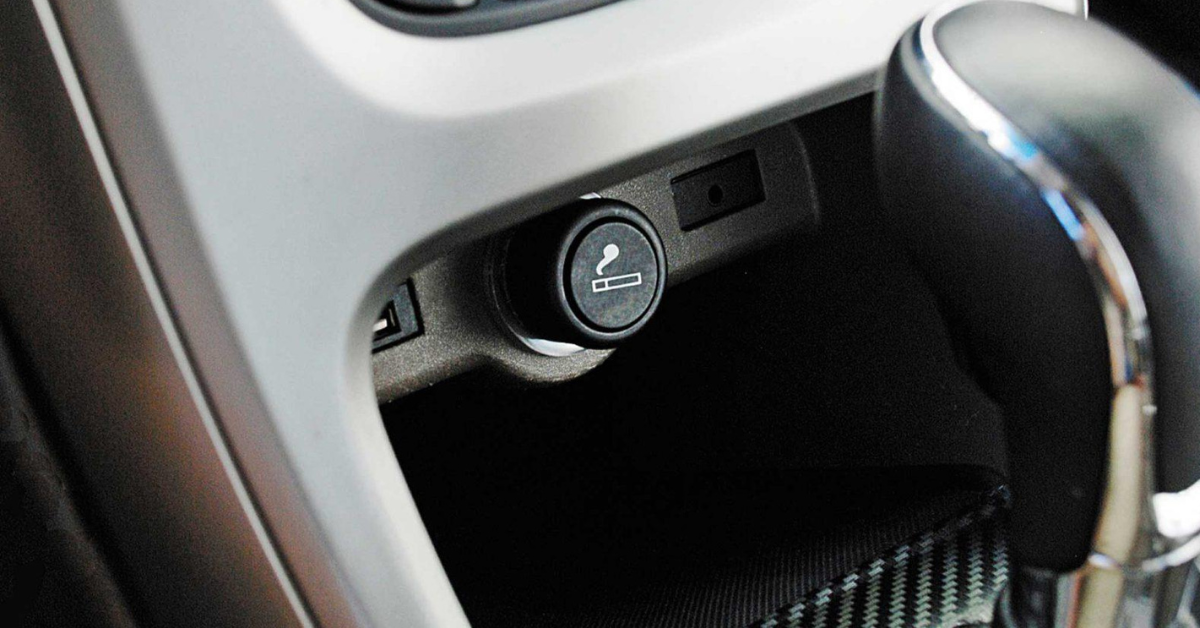
- Avoid Expensive Repairs – Fixing minor faults like a blown fuse or damaged socket can help you prevent costly repairs from mechanics.
- Ensure Convenience – A functional socket allows you to charge gadgets anywhere, making it easier to stay connected while on the go.
- Use DIY Solutions – Instead of relying on professionals, you can change minor faults yourself, saving time and money.
- Replace Unrepaired Components – Keeping your lighter socket in good condition ensures smooth operation and extends its lifespan.
- Enhance Safety – Fixing sockets with the correct specification can reduce safety hazards, preventing electrical issues in your vehicle.
Causes of Car Cigarette Lighter Not Working
A broken cigarette lighter might not be a big problem, but it can still be frustrating. Knowing how to fix it can help you get things working again quickly.
So, before we talk about the fixes, let’s first look at some common reasons why a car cigarette lighter stops working.
Faulty Fuse or Bad Wiring Issues
A car cigarette lighter can stop working due to bad wiring or a faulty fuse, which is one of the most common reasons for this issue. When the fuse is blown, it disrupts the socket’s function, making it difficult to handle extra amperage and potentially leading to a complete failure.
Additionally, plugging inappropriate devices into the lighter can overload the circuit, causing it to fail or stop functioning properly. If these problems are ignored, they can impact the whole electrical system of the vehicle.
Blown Socket
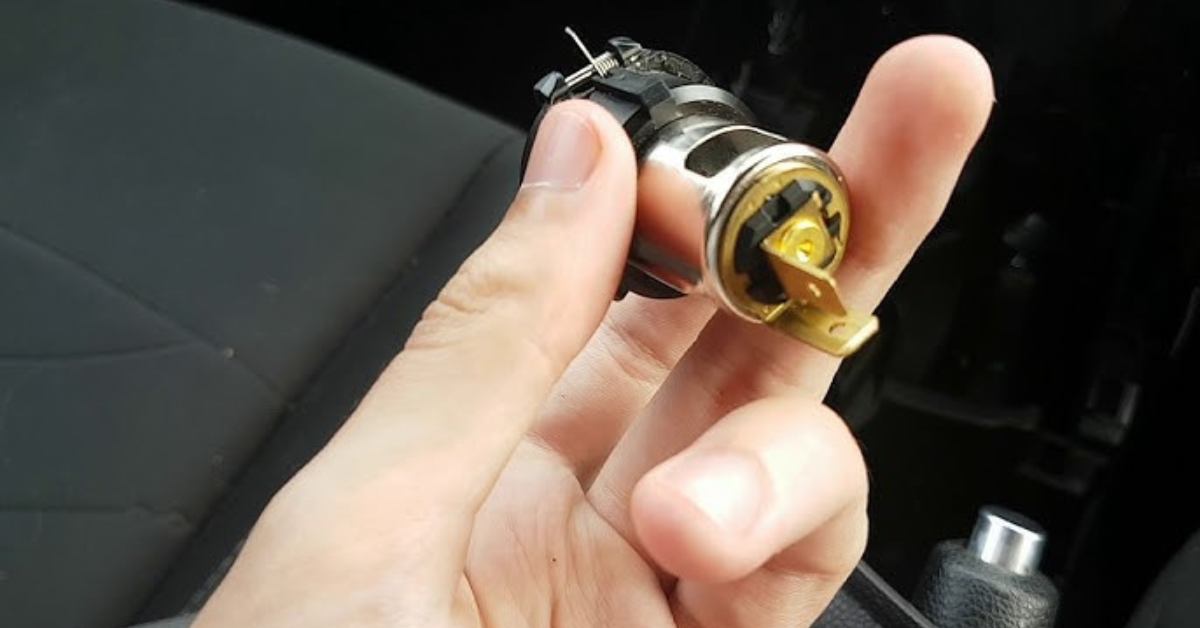
A blown socket is a common cause of a cigarette lighter not working, affecting its ability to function properly. Just like a faulty charger port, a damaged socket may fail to receive electricity, making it unusable. This problem can disrupt essential car functions, especially if you rely on the lighter for charging devices.
Obstructions In The Cigarette Lighter
A common issue with vertically installed lighters is the accumulation of small particles, food crumbs, or other objects inside the socket, which can disrupt the electrical supply. This can cause problems not only with lighting but also when trying to charge a phone. When debris builds up, it prevents proper contact, making the lighter ineffective.
Bad Quality Charger
A bad charger can lead to fuse failure and damage to your car’s electrical system. Since different manufacturers use various names for charging devices and accessory outlets, checking the vehicle’s manual is crucial to locate the right fuse and avoid causing damage. Some cars label the fuse box under the hood with terms like LTR, cigar lighter, cigarette lighter, AUX power point, 12V outlet, or 12V power point.
If the fuse is burnt or broken, you can use a gripper or your fingers to pull it out and check for metal indicators that confirm if the fuse is faulty. Replacing it with a new fuse ensures the lighter functions properly and restores power for charging devices.
Ways To Fix Car Cigarette Lighter Not Working
Now that you know some common reasons why your car cigarette lighter may not be working properly, it’s time to explore some simple ways to fix it.
1. Inspect the Lighter’s Fuse
To check if the cigarette lighter’s fuse is faulty, use a circuit tester to confirm if it’s receiving power. Start by placing the clip end of the tester on the outer frame of the socket and hold it securely, as clipping can sometimes be difficult. Next, use the longer end of the tester to touch the back of the socket.
If the test light turns on, it means the circuit is working. However, if it doesn’t, the problem lies in the fuse, which may need to be replaced or repaired. In this case, resolving the issue in time ensures your lighter functions properly and prevents further electrical problems.
2. Fixing a Damaged Lighter Fuse
A car cigarette lighter fuse can blow due to multiple failures, often caused by an item that consumes more amperage than the design allows. This situation can lead to a damaged socket and electrical issues in the circuit. Typically, circuits are fused at 10A or 15A, but some larger schematics or inverters may demand more current, leading to an overload. When the fuse blows, it can fail to power electrical appliances and may even cause the inverter to stop working.

The easiest step is to observe the results and replace the 12V cigarette accessory fuse if necessary. If the fuse immediately blows again, there is a deeper problem in the circuit that needs to be discovered and fixed. If you have already encountered this issue and the fuse initially blew, it may indicate a failed component, requiring a thorough inspection to prevent further damage.
3. Inspect the Inside of the Lighter
If the lighter’s fuse is working fine but the cigarette lighter doesn’t work, there may be an internal problem that needs attention. Check inside for debris, random objects, or dust that could be causing an issue. These obstructions can prevent proper contact, affecting functionality.
To resolve this, carefully take out the inner parts and clean them thoroughly. Regular cleaning helps maintain efficiency and ensures the lighter operates properly.
4. Lighter’s Inspection
If the cigarette lighter is still not working after replacing the fuse and cleaning the socket, it likely means there is an underlying fault. Start by carefully pulling out the lighter’s portion from the socket and checking for any burned areas, debris, or other issues that could signal burning signs or a short-circuited component. If there is visible damage, you need to replace it with a new one to restore functionality.
Read More:
SH AWD Light On Acura MDX [Explained & Quick Fixes]
Mercedes-Benz A2 Service: [Maintenance for Peak Performance]
5. Clean The Car Lighter

To fix a car cigarette lighter that is not working, regular cleaning is important. Debris, particles, or an object stuck inside can obstruct the current flow, preventing proper functionality. Start by deep cleaning the entire area around the charger and plug, ensuring nothing is out of place. Removing buildup helps maintain efficiency and ensures the lighter works fine. Making this a habit while cleaning the dashboard is a viable option to avoid inconvenience and keep the system running smoothly.
6. Remove unnecessary plugged-in devices
To troubleshoot a car cigarette lighter that is not working, you can also start by removing unnecessary plugged-in devices from the 12-volt sockets. Some power appliances or gadgets may not be designed for the lighter port and can create electrical overloads, disrupting functionality. Plugging in the wrong DC item can interfere with the electrical route, while food crumbs, stones, or dirt inside the plug may further block connections.
7. Test or Replace the lighter socket
To check if the cigarette lighter socket is working, use a multimeter to verify if electricity is flowing correctly. Turn the ignition switch in the automobile to the “on” position before completing the test, as many lighters do not operate when the key is turned off. Set the multimeter to DC voltage and connect the red wire to the socket labeled V and the black COM lead to the metallic circle at the bottom of the socket.

Then, place the probed end of the black lead on the side of the socket and read the measurement. If the reading is considerably below 12 volts, the problem likely lies in the circuit, requiring a replacement. You may need to pay between $50 to $150, depending on the severity and your car model. Since modern vehicles have a complex system, it is best to diagnose the issue using mechanical tools or seek professional help. A DIY fix can be a viable option, but always ensure safety while working on the vehicle’s electrical system.
8. Check if the Charger or Plug is Faulty
If your cigarette lighter is not charging your phone, the plug or charger may be defective. Start by checking the electronics inside the 12-volt auxiliary socket for any damaged components, such as worn springs or loose connections. If the plug is not inserted correctly, it may not establish proper contact. Reinsert it firmly and test again. If the issue persists, seeking expert assistance for repair or replacement is recommended.
FAQS
How Do I Get My Cigarette Lighter to Work Again?
If your cigarette lighter is not working, the issue might be a blown fuse. The first step is to check the fuses in your vehicle’s fuse box. If they are not marked, refer to the vehicle’s manual to determine which fuse supplies power to the lighter. If the fuse is blown, it must be replaced with a new one of the same rating to avoid electrical issues. Using a higher amperage fuse can cause further damage, so always ensure the correct replacement.
What Causes a Cigarette Lighter to Stop Working?
A blown fuse, bad wiring, or a faulty circuit can cause a cigarette lighter to stop functioning. A short or open circuit, a non-functioning power unit, or issues with the switch or relay may also contribute to the problem. Identifying and fixing these issues early can prevent further damage and restore proper operation.
Why Is My 12V Car Socket Not Working?
A 12-volt outlet may stop working due to a blown-out fuse, damaged wiring, or a malfunctioning alternator. If the fuse is blown, replacing it soon ensures a reliable power supply for electronic devices while driving. If the problem continues, the outlet may need a replacement to prevent further electrical failures and maintain vehicle safety.
How to Check if a Car Cigarette Lighter is Working?
To inspect if the cigarette lighter socket is functioning, use a multimeter to measure DC voltage. Set the multimeter to DC voltage, then insert the black probe on the outer metal part of the socket and the red probe at the center. Turn on the car’s ignition and read the voltage. If it shows around 12 volts, the socket is receiving power, meaning the issue may be with the lighter itself. If there is no reading, the fuse or wiring may need to be checked for faults.
How Do You Fix a Stuck Cigarette Lighter in a Car?
If the cigarette lighter is stuck, it is likely due to swelling or rust buildup. Apply WD40 and let it sit for a few minutes, then gently wiggle, twist, and try to pull it out. If it remains stuck, a more firm approach may be needed. Once the lighter comes out, clean the socket thoroughly to remove any mess or debris using paper towels. Regular maintenance can help prevent future issues and keep the lighter functioning properly.

Mian Hashir is a passionate automotive enthusiast and the lead author at Car Garagee, a website dedicated to providing in-depth car reviews, maintenance tips, and the latest news in the automotive world. With years of experience in the industry, Hashir combines his technical knowledge with a love for cars to deliver insightful and engaging content. Whether you’re a car owner or a curious reader, Mian Hashir’s articles help readers make informed decisions, from choosing the right vehicle to understanding how to keep it in top condition.

